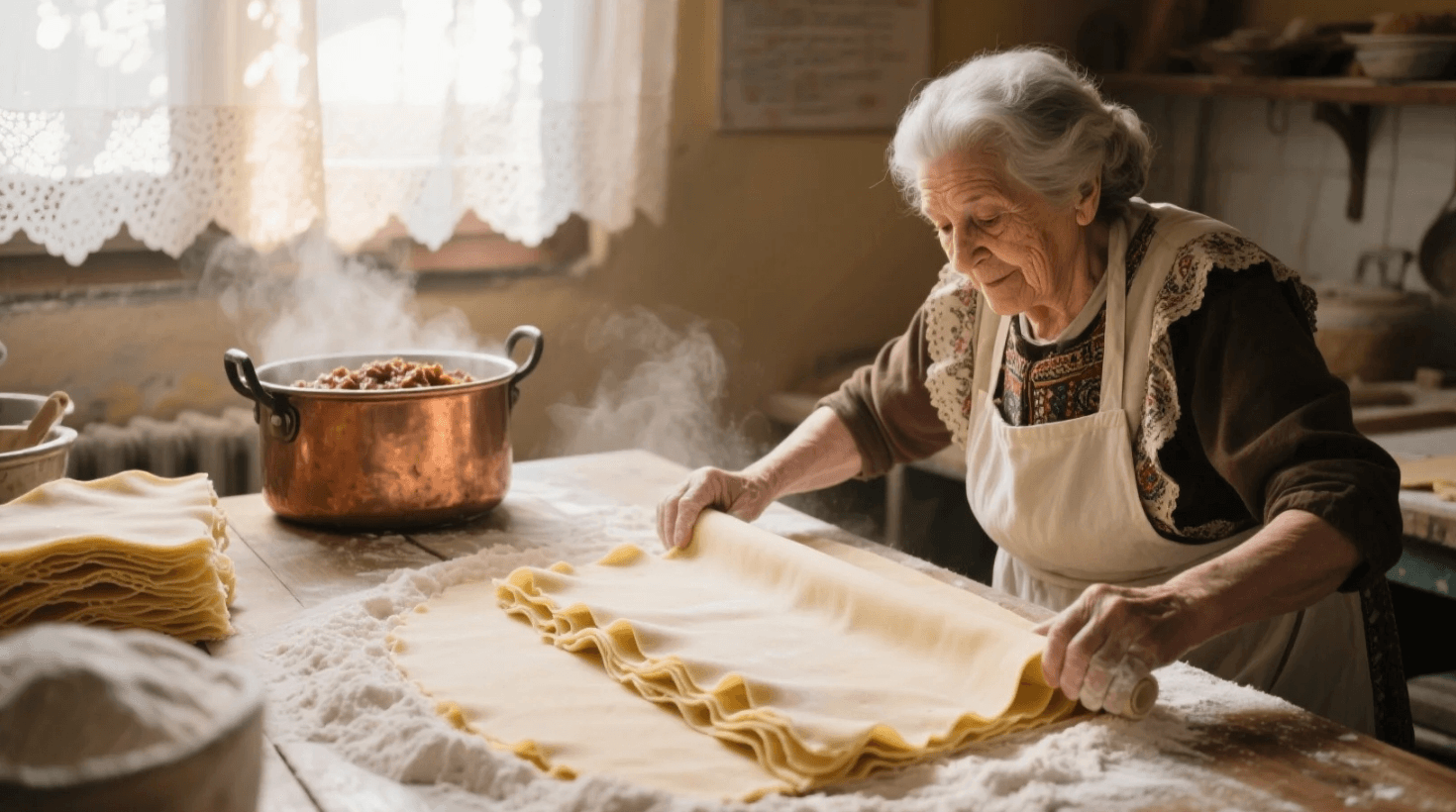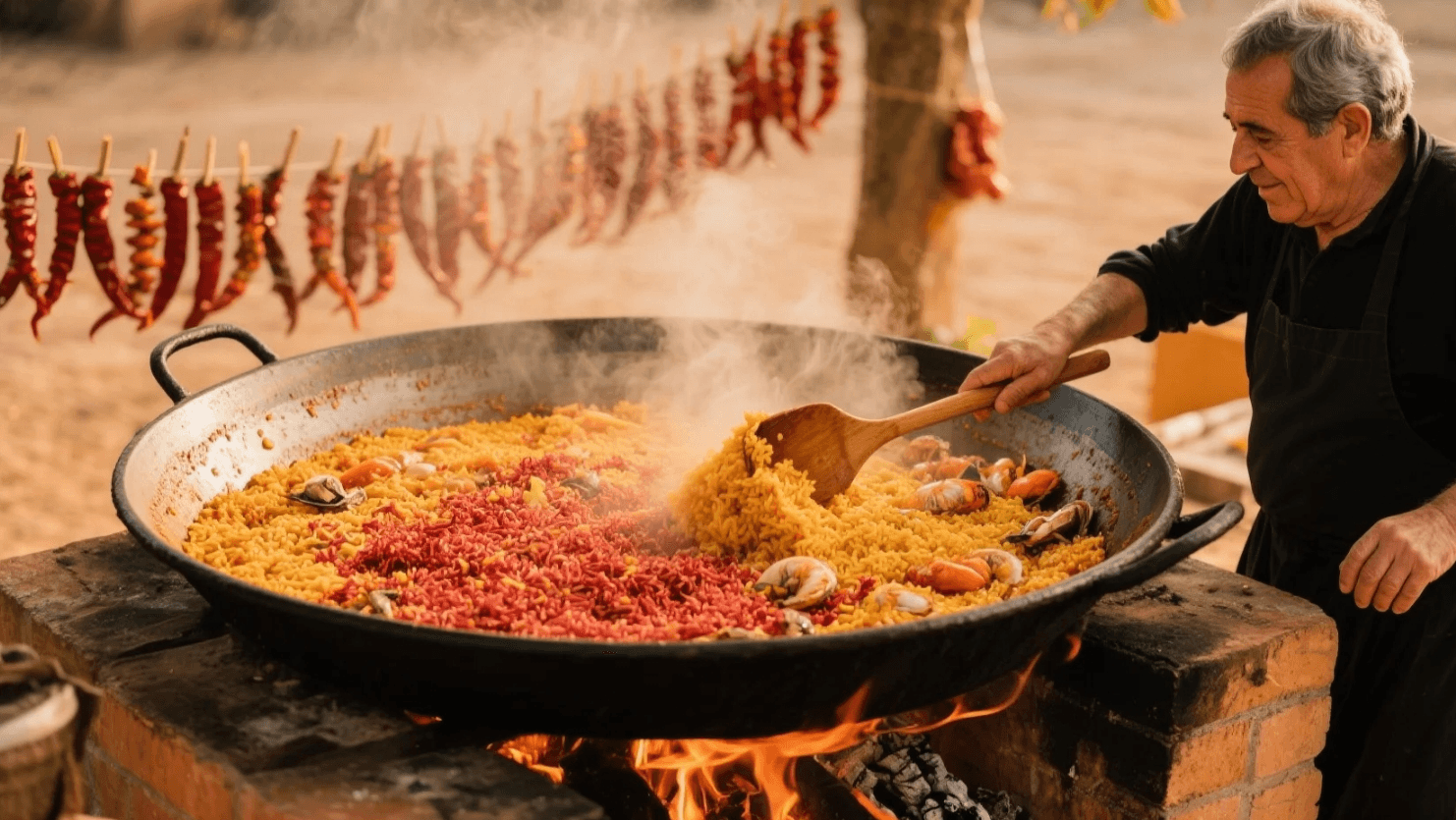Spain vs Italy: Which Country Reigns Supreme for Food Lovers? (2023–2024 Showdown)
Picture this: You’re standing at a crossroads. To your left, a steaming plate of paella, its saffron-yellow rice glistening with shrimp and rabbit. To your right, a heaping bowl of handmade tagliatelle, smothered in a ragù so rich it could make a monk weep. Your stomach growls. Your taste buds tingle. Which way do you go?  This isn’t just a hypothetical question—it’s the eternal debate for food lovers. Spain or Italy? The land of tapas and jamón ibérico, or the birthplace of pizza and pasta? With 18 Michelin-starred restaurants in Spain (Michelin Guide, 2023) and 387 in Italy (2023), the stakes are high. But here’s the twist: You don’t need a Michelin star to eat like a king in either country. I’ve spent the last year traveling between Barcelona and Bologna, Naples and San Sebastián, devouring everything from €2 bocadillos to €200 truffle menus. I’ve learned that the “best” cuisine isn’t about star ratings—it’s about passion. Spain’s food is bold, experimental, and meant for sharing. Italy’s is soulful, traditional, and rooted in nonna’s kitchen. So, which country should you choose? Let’s break it down. The Culinary Battlefield: Spain vs Italy at a Glance Before we dive into the nitty-gritty, let’s set the stage. Both countries are UNESCO-recognized gastronomic powerhouses, but their approaches couldn’t be more different. Spain: Vibe: Laid-back, innovative, and social. Tapas bars are the norm—order a drink, and a plate of croquetas appears. Stars: Jamón ibérico (cured ham), paella, tortilla española (potato omelet), and gin tonics (yes, they’re a big deal). Cost: Budget-friendly in small towns, but splurge-worthy in cities like San Sebastián (home to 7 Michelin-starred restaurants). Italy: Vibe: Warm, family-oriented, and timeless. Meals last hours, and pasta is a religion. Stars: Pizza (Naples-style), pasta (handmade!), gelato, and espresso (sipped standing up, like a local). Cost: Affordable everywhere—a €5 pasta dish in Rome tastes just as good as a €25 one in Milan. The Verdict So Far: Spain is the wild child of European cuisine. Italy is the grandma who knows best. The Showdown: 5 Key Categories to Decide the Winner 1. Breakfast: Churros vs. Cornetto Spain: The Play: Churros con chocolate. Fried dough sticks dipped in thick, velvety hot chocolate. It’s a carb bomb—and a religious experience. Where to Try: Chocolatería San Ginés (Madrid), opened since 1894. Pro Tip: Add a splash of brandy to the chocolate. Trust me. Italy: The Play: Cornetto (croissant) and cappuccino. The cornetto is flakier, sweeter, and often filled with Nutella. The cappuccino? Perfection. Where to Try: Roscioli (Rome), a bakery-meets-deli where locals line up at 6 AM. Pro Tip: Never order a cappuccino after 11 AM. Italians think it’s a crime. Winner: Italy. The cornetto’s buttery layers and the cappuccino’s creamy foam are unbeatable. But Spain’s churros are a close second. 2. Lunch: Tapas vs. Trattoria Spain: The Play: Tapas crawl. Start with patatas bravas (spicy potatoes), move to gambas al ajillo (garlic shrimp), and end with tortilla española. Wash it down with a vermouth on tap. Where to Try: Bar Pinxto (Barcelona), where the jamón is sliced so thin it melts. Pro Tip: In Granada, tapas are free with a drink. Bar-hop until you explode. Italy: The Play: Trattoria feast. Start with antipasti (burrata, prosciutto), move to primo (handmade pasta), and end with secondo (grilled fish). Don’t skip the house wine—it’s usually €3 a glass. Where to Try: Trattoria da Enzo al 29 (Rome), where the cacio e pepe is so good it’ll make you cry. Pro Tip: Order the “off-menu” pasta. Nonnas hide their best recipes from tourists. Winner: Spain. The variety, the social aspect, and the vermouth culture give it the edge. But Italy’s pasta is a cheat code. 3. Dinner: Paella vs. Pizza Spain: The Play: Paella. The real deal is made with bomba rice, rabbit, snails, and saffron. Cook it over a wood fire for extra smokiness. Where to Try: Can Majó (Barcelona), a beachside joint where the paella is so good it’s worth the 2-hour wait. Pro Tip: Never order paella with seafood and meat. It’s a tourist trap. Italy: The Play: Pizza. The Neapolitan version has a puffy crust, San Marzano tomatoes, and fresh mozzarella. Cooked in a 900°F wood-fired oven for 90 seconds. Where to Try: 50 Kalò (Naples), a Michelin-starred pizzeria where the margherita is a work of art. Pro Tip: Fold your pizza. It’s not rude—it’s authentic. Winner: Italy. Pizza is a global icon for a reason. But Spain’s paella is a close second—especially if you’re a meat lover. 4. Dessert: Churros (Again) vs. Gelato Spain: The Play: Churros. Yes, they’re back. But this time, pair them with a café con leche. It’s a breakfast-dessert hybrid. Where to Try: Chocolatería Valor (Granada), where the chocolate is so thick you could stand a spoon in it. Pro Tip: Add a dash of cinnamon. It’s a game-changer. Italy: The Play: Gelato. The real stuff is dense, creamy, and made with milk (not cream). Flavors like pistachio, stracciatella, and fior di latte are mandatory. Where to Try: Gelateria della Passera (Florence), a hole-in-the-wall spot where the gelato is so good it’s been featured in Vogue. Pro Tip: Avoid tourist traps with mountains of brightly colored gelato. Real gelato is muted and served in metal tins. Winner: Italy. Gelato is a scientific marvel. Spain’s churros are delicious, but they’re no match for pistachio perfection.  5. Drinks: Gin Tonic vs. Espresso Spain: The Play: Gin Tonic. Not a gin and tonic—a Gin Tonic. Spain takes this classic seriously, with garnishes like rosemary, juniper berries, and edible flowers. Where to Try: Bobby Gin (Barcelona), a speakeasy with 100+ gins and a botanical garden’s worth of garnishes. Pro Tip: Order a “gin menu.” It’s a thing. Italy: The Play: Espresso. Short, strong, and sipped standing up. Italians drink it like water—and they’re judging you if you order a latte after noon. Where to Try: Caffè Sant’Eustachio (Rome), a 1930s café where the espresso is roasted over a wood fire. Pro Tip: Never add sugar. It’s a sin. Winner: Spain. The Gin Tonic is a work of art. But Italy’s espresso is a cultural cornerstone. The Hidden Gems: Off-the-Beaten-Path Eats Tired of the classics? Here are 3 under-the-radar spots: Spain: Mercado de San Miguel (Madrid). A food hall where you can try everything from Iberico ham to oysters. Italy: Mercato Centrale (Florence). A two-story food emporium with stands selling truffle pasta, artisanal cheeses, and porchetta sandwiches. Bonus: San Sebastián (Spain). Basque country’s pintxos (Basque tapas) are tiny masterpieces. Try a gilda (anchovy, olive, guindilla pepper) at Bar Zeruko. The Budget Battle: How to Eat Like a King (Without the Crown) Both countries are affordable, but here’s how to save: Spain: Lunch menus (menú del día) are €10–€15 for 3 courses. Drink tinto de verano (red wine + lemon soda) instead of sangria. Italy: Aperitivo hour (6–8 PM) offers free snacks with a drink. Order a spritz and fill up on olives, cheese, and bruschetta. Pro Tip: In Italy, never eat near a tourist attraction. Walk 5 blocks, and prices drop by 50%. The Verdict: Spain or Italy? It Depends on You. Here’s the truth: There’s no wrong answer. Spain is for the adventurous, the social, the gin-loving foodie. Italy is for the traditionalist, the pasta purist, the espresso-obsessed traveler. Choose Spain if: You love sharing plates and late-night dining. You want to try weird foods (snails, anyone?). You’re a fan of modernist cuisine (think El Celler de Can Roca in Girona). Choose Italy if: You crave comfort food and family-style meals. You’re obsessed with pasta and pizza. You want to eat like a local (no menus in English, please). FAQs: Your Burning Spain vs. Italy Food Questions Answered Q1: Is tapas free in Spain? No, but in Granada, it’s free with a drink. Everywhere else, you pay per plate. Q2: Do I need to tip in Italy or Spain? In Spain, tipping is optional (5–10% is nice). In Italy, round up or leave €1–€2. Q3: Can I eat vegetarian/vegan in either country? Yes, but it’s easier in Spain (vegan tapas, gazpacho) than in Italy (where cheese and meat are king). Q4: When’s the best time to visit for food? Spain: September–October (mushroom season, wine harvests). Italy: May–June or September–October (truffle season, shoulder-season prices). Conclusion: The Ultimate Foodie’s Dilemma, Solved Here’s the secret: You don’t have to choose. Do what I did—split your trip. Spend a week in Barcelona, devouring jamón and vermouth. Then fly to Naples, stuffing your face with pizza and gelato. Because in the end, the “best” cuisine isn’t about Spain or Italy. It’s about the experience. The laughter over tapas. The silence over a perfect cappuccino. The joy of eating something so good it makes you close your eyes and sigh. So, pack your bags (and your stretchy pants). The food is calling—and it doesn’t care which country you visit. It just cares that you show up. Buon appetito… or ¡Buen provecho! 🍝🥘 |
Bond
|
2025.05.08




